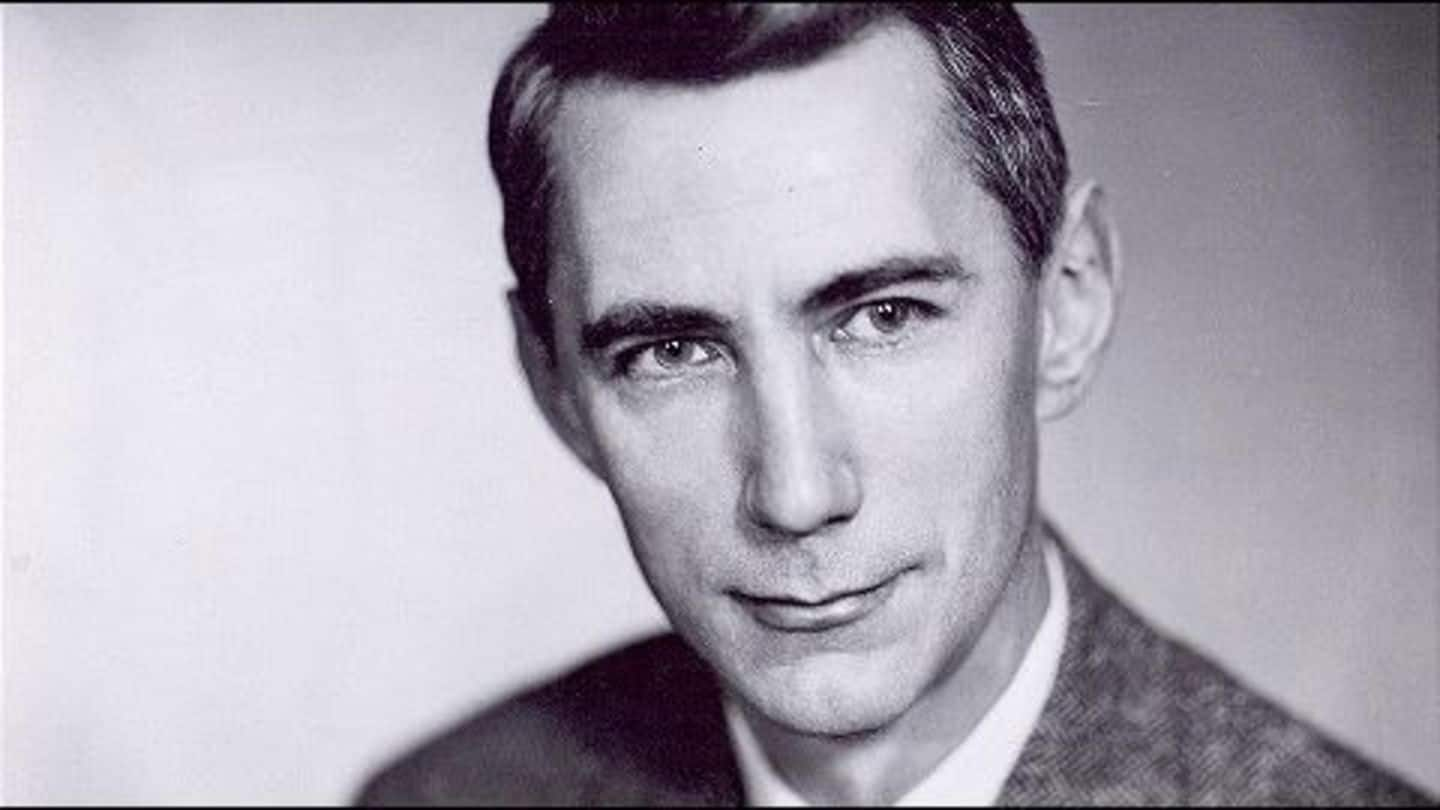
Claude Shannon’s 100th anniversary, Google celebrates with doodle
What's the story
Claude Shannon-'Father of the Information Age' who coined the term 'bit' (fundamental unit of digital information) would have turned 100 had he been alive.
To celebrate Shannon's 100th birth anniversary, Google came up with an innovative Doodle featuring Shannon.
Shannon is seen juggling with a 1 and two 0s on a binary-code-background representing his passion for juggling and his contribution to the digital world.
Introduction
Who was Claude Shannon?
Claude Elwood Shannon, born on 30 April 1916, was an American mathematician, electrical engineer, and cryptographer; he is known as the 'father of information theory.'
He was best known for the pioneering paper he had published in 1948 on information theory.
Along with information theory, he had also founded digital circuit design theory, demonstrated electrical applications of Boolean algebra, contributed to code-breaking and telecommunications.
1936-40
A distant cousin of Thomas Edison
As a child, Shannon admired Thomas Edison who was his distant cousin. Both Edison and Shannon were descendants of John Ogden-a colonial leader.
In 1936, he obtained Bachelor's degrees in both mathematics and electrical engineering; he constructed several models of planes, wireless telegraphs, and radio-controlled boats.
In 1940, he earned an MS in electrical engineering and Ph.D. in mathematics from Massachusetts Institute of Technology.
Personal
Explained the electrical applications of Boolean algebra
In 1940, Shannon showed how George Boole's logical symbols could be used as a series of ON or OFF switches, and how manipulating 1s and 0s could solve problems in electrical switch circuits.
1941-78
Worked for Bell laboratories and MIT
Claude Shannon had started working with Bell Laboratories from 1941 and continued till 1956.
His works at Bell Laboratories initially seemed impractical but, later they were used for developing telecommunications.
From 1958-78, he worked as a Donner Professor at MIT, where he worked under Vannevar Bush-inventor of 'Differential Analyzer' (the heart of early analog computers).
Later, Shannon made his mark with founding digital electronics.
1941-48
Wartime Research and postwar contributions
During the World War-II, Shannon worked on cryptography and fire-control-systems at Bell Laboratories under National Defense Research Committee's contract.
He invented signal-flow-graphs in 1942 and while investigating an analog computer's functional operation, he discovered the topological gain formula.
After the war had ended, he published 'A Mathematical Theory of Communication' (1948), which separated 'message' and 'medium' and transmitted 1s and 0s in binary form.
Awards
Shannon received several awards and honors
Shannon received many awards and honors throughout his life including the Alfred Noble Prize (1939), Morris Liebmann Memorial Award (1949), Ballantine Medal (1955) and AIEE's Merin J Kelly Award (1962).
He won the National Medal of Science and Medal of Honor from IEEE in 1966.
He received the Jaquard Award (1978), John Fritz Medal (1983), Kyoto Prize (1985) in addition to several honorary degrees.
Information
Recognizing Shannon’s contribution
On 24 February 2001, Claude Shannon died after a long battle with Alzheimer's disease at the age of 84. After his death, to recognize his contribution, 'AT&T Research Labs' was renamed as 'Shannon Laboratories' in 2002.